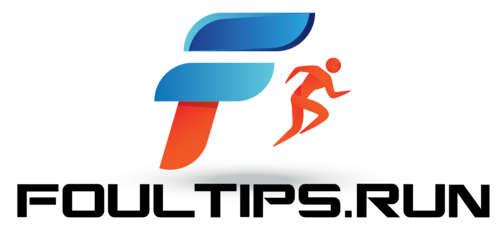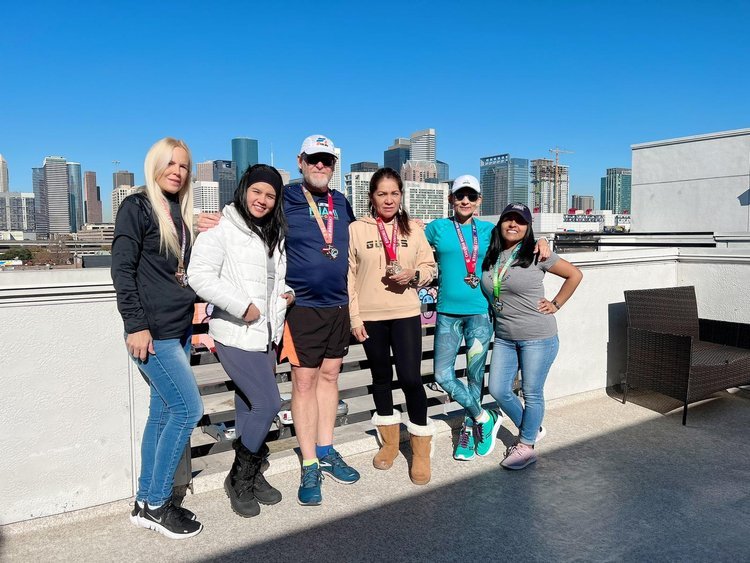
by Coach Adolfo Salgueiro | Jan 25, 2022 | Article, Coaching, Personal, Reflection
By Coach Adolfo Salgueiro
On Sunday, January 16th, I participated in the 50th anniversary edition of the Chevron Houston Marathon. I want to start by stating that it was one of the most amazing experiences I’ve had in 40+ years of racing. From the organizational perspective, the race is at the same level of any big-city event. It is up there with any Major. On the personal side, it was uplifting. From the coaching side, it was memorable.

About to cross the finish line with a hand in my heart and the other one thanking The One who made this miracle possible
I knew the event’s center of operations was the George R. Brown Convention Center, which is huge. I never expected it to take the entire place. The execution of the bib pick up was flawless even though a bit more signage would have been welcome for the sake of out of-towners, such as me. I did not visit the expo, though. Friends told me it was a smaller version, given the Covid reality of the world.
Running morning was cold, cold, cold. Thirty-six degrees when we left our Airbnb. But we were able to find refuge, toilets and a place to rest while we waited for our corrals to open. Everything was so well organized and orderly that your only worry was walking to the start. The whole shebang was taken care of for you.
The course was flat, sans an overpass and two, minor underpasses. We ran through beautiful areas of the city and crowd support was solid without being overwhelming. There were so many port-a-pots throughout the race that I never saw a waiting line. There were even urinals at the starting line, first time I’ve seen this in the US. I stopped about mile 14, not because I had to but as a preemptive measure, just because I could and there were no lines.
Last mile, back in downtown, was stunning. Lots of fans and photographers lining up to welcome back the runners. After picking up our spectacular finisher’s medal, we went into the Convention Center to get our finisher’s shirt and food bag. The only unflattering thing I have to say about the race is the shirt. It was a cheapy fabric, fits poorly and the design was nothing to write home about.
I fully recommend this event to anyone interested in a big-city race. This is a Marathon-Major-like organization without the Marathon Major label nor price tag.
COACHING EXPERIENCE
I had a wonderful experience with my four coached athletes in the race. All three marathoners set PRs even though two of them contracted Covid just three weeks before the race. This hindered their expectations and the size of their PRs, but they both achieve their A-Goals through courageous performances. The half marathoner was able to cross the finish line strong, healthy and with a big smile on his face. His goal was finishing after a long hiatus, and that was accomplished, too.
All runners trusted the process, followed their training diligently and executed their race plans to the tee. Thus, the results.
There is nothing more satisfying for a coach than one of your runners telling you: “Thank you. I couldn’t have done it without you”. Even though it sounds (and it is) self-serving, it reminds you that, even though they all had in them the ability to achieve what they just did, your guidance made a difference in this runner’s race. And that is priceless.
MY RACE
On the personal side, I was able to complete the Houston Marathon (my 11th), just 207 days after open-heart surgery. I trained with a race/walk protocol that allowed me to make this a reality, despite having time for just two long sessions (16 and 17 miles). Yet, in just four months, I was able to complete the race in 5:16:45. The time is nothing special, but on my race, time was irrelevant. It was all about crossing the finish line.
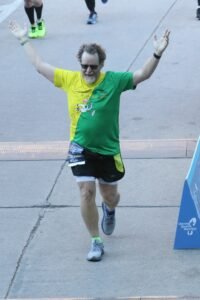
Even though it was my 11th marathon, this finish line was special.
The chilly weather was helpful. I ran the first 7 miles biting an 11 pace, and from there started my walk/run protocol of .18/.82 (weird splits, sure, but it was where, after much practice, I felt more comfortable). I reached miles 16, 18 and 20, tired but strong. Legs started to hurt reaching miles 21 and 22 and after the walking break for Mile 23, the legs just stop firing. I tried to restart the running, but it wasn’t happening. I ran some quick math and realized that if I restarted now, I could go sub-5, but the legs were shot. Then I realized that being at Mile 23, 30 weeks after OHS, was miracle enough and I wasn’t going to let the clock dictate the terms of my happiness or what God was allowing me to do. So I walked most of the last 5K with a big smile, never resenting the time lost or wondering why I didn’t go for the half.
I crossed the finish line with teary eyes and a couple of seconds later, I hear the unmistakable screams of my beautiful wife welcoming me. Unfortunately, she was on the other side of the street, and it would take about an hour for me to hug her. But the fact that she witnessed the miracle of my finish, firsthand, uplifted my spirit.
Houston was a spectacular experience in every sense of the phrase. As a runner, as a coach and as the protagonist of something improbable. Because what I personally accomplished is so unlikely that it can only be explained by the divine intervention of God, through me. This is what proves that it is a miracle. Sharing it with my friends from the No-Club Runners multiplied tenfold the experience.
I can’t wait to see what’s next!
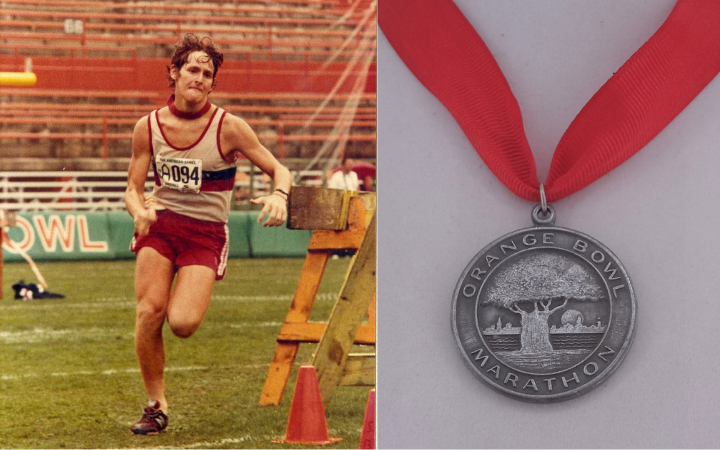
by Coach Adolfo Salgueiro | Jan 18, 2022 | Article, Personal, Reflection
Orange Bowl 1983
By Coach Adolfo Salgueiro
I’ve written about my first marathon in bits and pieces throughout this blog, but I’ve never written anywhere about my entire recollection of that 1983 Orange Bowl Marathon. This upcoming January 22nd will be the 39th anniversary of my race. So, before my memories keep fading away, I better put all I can recall into paper (or digital format).
I was a 17-year-old high school senior living in Caracas, Venezuela. I always kept active by running, practicing karate, baseball, soccer, tennis, hiking, swimming, biking and whatever came along. Running a marathon was a goal somewhere on the backburner, but, thanks to my dad, I got the chance to fulfill it earlier than expected.
I believe we arrived in Miami the day before the Saturday race. We stayed in a hotel in downtown and went to a spacious hotel ballroom nearby, to pick up our bibs. I remember being blown away by the technology of the day, when my bib was printed before my eyes, instead of being ready ahead of time. I don’t recall an expo, but that doesn’t mean it wasn’t there. I read, maybe in that day’s Miami Herald, that none other than the legendary Bill Rodgers was the favorite to win.
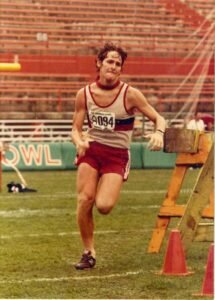
This is the only picture I have from the race, but it is one of the best running pictures ever taken of me. Check out the detail of the untied shoe with no socks, to which I make reference, later in the post.
I also recall my dad buying me a Casio stopwatch, so I could keep track of my marathon time. I had that Casio for years. I don’t remember how I lost it or when it broke, but I’ve seen it in pictures from the early 90s.
On race morning we met with the Venezuelan runners, most of them where my dad’s buddies, at the hotel lobby. The one thing I vividly remember was asking for a coffee at the hotel bar and getting a gigantic cup of black, diluted, disgusting American coffee. At home, a small cup of good coffee with a generous amount of milk would start off the day.
One of the runners had rented a sports car and somehow, more people than was safe crammed inside for a short drive to the majestic (at lease in my eyes) Orange Bowl Stadium. This is where the Miami Dolphins, who were playing the Super Bowl next week, held their home games.
Before time chips, you had to present yourself and your bib to the organizers, so they knew you were at the starting line. Somehow, we could not find the registration table. We were looking for it like crazy until we realized this was going to be based on the honor system.
I recall nothing about the starting gun, crossing the starting line or conversations along the way. I do remember, though, my dad constantly reining me in because I was going too fast. He also reminded me to take water every so often, as the humidity was exceedingly high.
My dad has one indelible memory of the race. After a rainy patch along the way, we found ourselves running next to a woman with a drenched, white outfit that left nothing to the imagination. At 17 and with raging hormones, I couldn’t but get distracted by the magnificent side show. My dad had to bring me back to the race at hand. There is no marathon talk in my household where this story doesn’t come up.
The course had two in-and-out segments (Coral Way and Coconut Grove). Both times, as we were going in, the pack led by Bill Rodgers, was coming out. For a 17-year-old kid from Caracas, seeing the legendary Bill Rodgers, running in the same race within a few meters from each other, was the highlight of the event. It was the equivalent of participating in the same Monaco Gran Prix with Niki Lauda or playing in Veterans Stadium, side-by-side with Mike Schmidt. It was that improbable.
Sometime during the Covid lockdown of 2020, my friend Starr Davis invited me to participate on a Zoom call with Rodgers. At the end, I had the chance to asked him what he remembered form the 1983 Orange Bowl. Surprisingly, he recalled a lot. Starr recorded the interaction with her cellphone. I invite you to check the video, which I have included right here.
Most of my memories of the 1983 Orange Bowl Marathon are from the last 7.2 kilometers (4.5 miles). I recall them vividly because I suffered miserably. My dad and I agreed to run together for 35 kilometers (21.8 miles), and from there, each one would run his own race. By kilometer 35.1 he had already left me in the dust. I slowed down and started walking. I was drenched, tired, hungry, and questioning what the fuck was I doing there, instead of being at home in Caracas, maybe getting ready to play baseball with my buddies.
At one point, it had to be closer to the end, I took my shoes off and started walking on my socks. The shoes were heavy, and I considered just tossing them to the side, but then I thought of my dad getting upset, as they were the shoes he let me borrow, so I decided to keep them. Wise choice.
A friend of my dad, the late Jose Ortega, saw me close to the end and ran a bit with me with words of encouragement. I promised him I would finish so I discarded my socks, put on the shoes, which I did not tie, and started running. The next memory I have is of my dad and some Venezuelan runners at the entrance of the stadium, cheering me on. As I hit the grass, I started sprinting like crazy. To this day I can’t figure out how my shoes didn’t fly off my feet. Check them in the accompanying picture. Not only untied, but open at the top.

37 years later, I got my hands on a medal from the race
I lifted my arms as I crossed the finish line and, one way or another, I found my dad and collapsed. My first thought was: “When are we doing the next one?”
I knew my time was around 4:11 but I did not know for sure. I wouldn’t find until months later when I got my finisher’s certificate in the mail, that my official time was 4:11:11. I also got a proof of one picture in case I wanted to order it. It is the only image I have from the entire experience. Thank God is one of the best pictures ever taken of me running.
In those days, medals were not ubiquitous or for everybody, and I did not get one. In September 2020 I found one on eBay and jumped on it. If you care to read about the 37-year medal saga you can check the blog post I wrote about it by clicking here.
Sorry if this blogpost ran longer than usual, but I am trying to recall as much as I can. Yes, I could have waited until next year, the 40th anniversary, but by then, I may forget something else. And I can always repost.

by Coach Adolfo Salgueiro | Jan 11, 2022 | List, Personal
By Coach Adolfo Salgueiro
In my New Year Running Resolutions for 2022 post from last week, suggestion #8 was to “read at least one running book”. As much as I believe this is an important resolution, I confess that I kind of threw that one in at the last minute, mostly because I was selecting the running books I want to read this year.
A few readers contacted me letting me know this is a clever idea and they will either pick or have already picked their running book for 2022. As an avid reader, I can’t but be delighted on the reception this suggestion had. Now, one of my readers (and dear friend), asked me that, based on this suggestion, what is “the one book” I will recommend for someone to read in 2022.
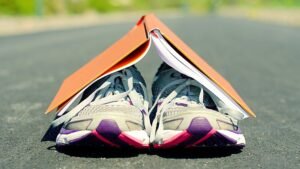
If you want to get better, learning about our sport is as important as putting in the miles. Being knowledgeable is always an advantage
The question was so broad that I didn’t pay much attention to it, at first. But as the week progressed, I kept circling back to it. Sure, there is not a straight answer to it but there must be a way around it. Somehow, this remained in my brain’s backburner and would not go away. So this is what I have come up with:
There is no way to recommend just one book. No one book encompasses everything, nor it can satisfy the curiosity of every reader. In the post, I stated that “If we want to get better at our sport, we must learn about its science, its practices, its history, and its top performers. Personal experience is important, sure, but it is not the wherewithal to become the best runner you can be.”
Based on this, I decided to segment that suggestion and propose one book from each category. So, based on your particular interest, you can have “The One Book”. It is not what was asked but I hope it fits the bill.
Science – The Science of Running, by Steve Magness: If you want to geek out and dig deep into the science of what happens inside your body when you run, this is the book for you. It is dense, full of biology, scientific references and it is not the most fun to read. But if you decide to go through it, you will come out with a deep understanding on the physiology and mechanics of what happens when you run and why.
Practices – Run for Your Life, By Dr. Marc Cuccuzzella: The author has run Sub-3 marathons for over 30 consecutive years. In this book he mixes science and personal experience in an easy-to-read narrative, without geeking out on the science side of things. He explains the importance, the right way, and the approach to human movement so you can do it smarter, stronger, and springier. This book is as much for a sub-3 marathoner as it is for a walker wanting to complete a first 5k.
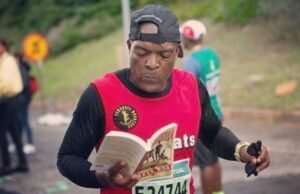
Reading while running is neither safe nor necessary. This is a real photo.
History – Kings of the Road, By Cameron Stracher: This is the story of Frank Shorter, Bill Rodgers, Alberto Salazar, and how they fueled the first running boom after Shorter’s marathon gold in the Munich Olympics (1972). It shows how running went from a niche activity by a bunch of crazies to the foundation of the New York City Marathon. This is the base for what came later, and thus, what we are enjoying, today. These were the pioneers who brought marathoning to the mainstream of participation sports.
Top Performers – There are great bios out there on Rodgers, Shorter, Johnny Kelly, Steve Prefontaine, Haile Gebrselassie and many more. But if you are delving into running bios for the first time, 26 Marathons, by Meb Keflezighi could be a good place to start. Beyond his running acumen, most of us can relate to him because he is a contemporary figure. We can also learn plenty from each one of his 26 incursions into the 26.2 monster.
Special Mention – Born to Run, by Christopher McDougall: An indispensable read for anyone interested in understanding how the human body was built to run, told through superb storytelling. This book has become a classic and there is a good reason for it. Just beware that his praise for minimalistic running shoes and barefoot running has been disproven. But other than that, it is a gem.
What is your book recommendation?
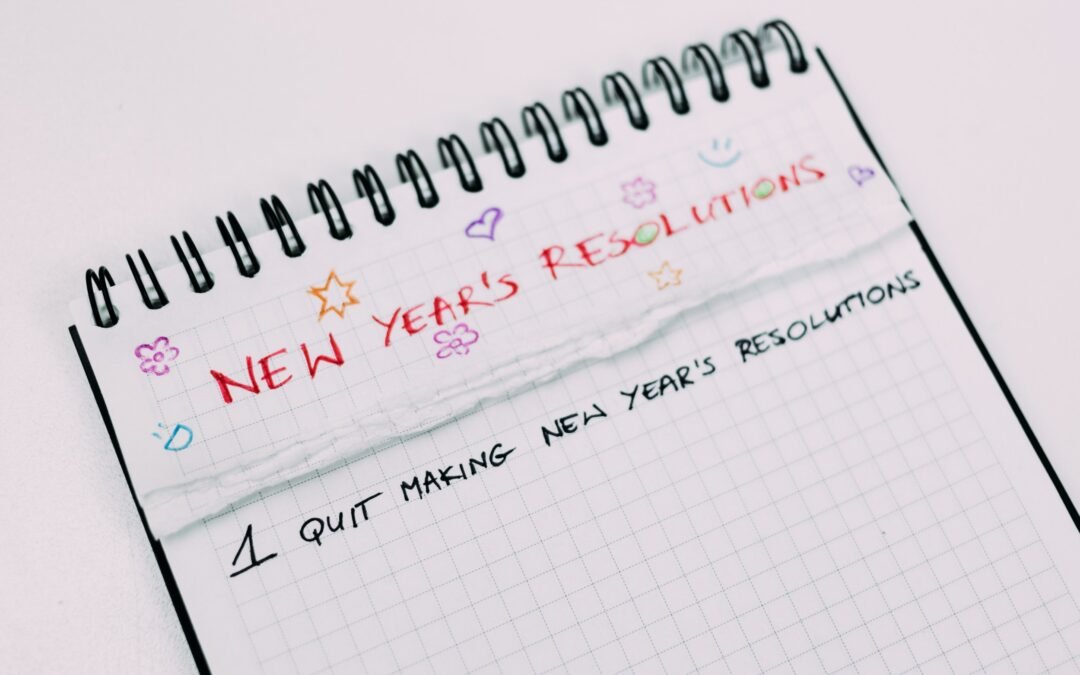
by Coach Adolfo Salgueiro | Jan 4, 2022 | List, Reflection
By Coach Adolfo Salgueiro
As a new year dawns on us and we focus on what we want to accomplish during the coming 12 months, our running lives should not pushed to the back burner. If we want to make sure that come December, we are not regretting a wasted athletic year, or cramming up the miles, the time to set up the course is now.
Running goals are very individual. Qualifying for Boston may be the goal of a lifetime for someone, while others qualify every year. Finishing your first marathon can be a tough yet achievable goal for you, while others are focusing on their 10th 100-miler. Goals need to be feasible and, mor important, individual.
These are a few running goals you may consider for 2022:
1 – Set up a mileage goal – One thousand miles in a year is an immensely popular and achievable goal. The 4-digit number is more of a psychological barrier than anything else, but it is feasible. The key is to break it (or whatever number you set your mind to) down to small segments you can easily manage. For 1000 miles, this is just 83.33 miles per month, or 4.8 a day if you run 4 times a week (less if you include a weekly long run). If this goal is for you, I recommend you join the 1K Run Club in Facebook, with over 8000 runners from all over the world.
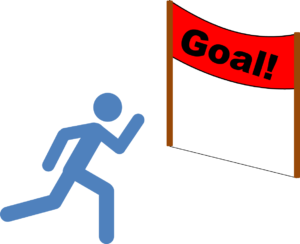
Set up your course for 2022, now, so you are not cramming up, come December
2 – Add one more day of activity per week – If running mileage is not your thing, adding another day to your training is an effective way to increase your activity. If you run 2-3 times a week, that 3rd or 4th day is viable. If you run 5 or 6, this may not be a goal for you, but you can always add a yoga class or a cross training day. The key is to increase your activity as long as you are not sacrificing your recovery.
3 – Add strength training to the weekly routine – It is the most neglected part of every training cycle, yet the most beneficial to make you stronger, faster and deflect injuries. This is usually the first casualty of a busy lifestyle. But consider this: As runners, we pound on our musculoskeletal system with 3-4 times our body weight into each leg, about 800 times per mile. If we don’t prepare our bones, muscles, tendons, and ligaments to take on the workload, we will be rehabbing instead of running.
4 – Set up a PR Goal on a Specific Distance – Setting up for a PR in every distance in the same season is a recipe for injury. Going for a PR in every race, every week is the fastest way to burning out. Set up your main goals for the season and focus on them. If you want to run your best 5K ever, a marathon PR may not be a good mix. Figure out what is important to you and go for it.
5 – Concentrate on running easy on easy days – The biggest mistake runners make is to go to fast on easy days. There is a good reason why easy days are labeled as “easy”. It is because you are supposed to run easy. These are the sessions when you recover so you can go faster later, when you develop the cardiovascular system so you can go faster later, when you prepare your musculoskeletal system to adjust so you can go faster later. Science has determined that you won’t get slower by running slow. Quite the contrary. You must run slow to eventually be able to run fast.

In 200,000 years of history, humans haven’t evolved not to sleep. So hit that pillow in 2022 (Photo: Andrea Piacquadio, Pexels.com)
6 – Focus on Sleeping –Sleeping is the number one device in our recovery tool bag, and it is mandatory. Consider this: The Homo Sapiens emerged about 200,000 years ago and during its evolution, the need for sleep to recover and reset our systems has not disappeared. That alone should tell you why you can’t skip it. So, make sure 7-8 hours of sleep a night is part of your daily training for 2022.
7 – Keep a running log – Sure, Garmin, Runkeeper, Strava, etc., keep track of more parameters you could ever understand or need. But keeping a personal log, either handwritten or in a computer file, on your daily activity, will make a noticeable difference in the understanding of your training.
8 – Read at least one running book – If we want to get better at our sport, we must learn about its science, its practices, its history, and its top performers. Personal experience is important, sure, but it is not the wherewithal to become the best runner you can be. Reading may not be for everybody, but one book a year should be easily manageable. Find a book on a running subject that interests you and give go for it.
Of course, these are not the only athletic goals you may set up for 2022. They are just ideas to help you define what you would like to achieve this year. Pick one, pick two or pick them all, but get started right away.
What are your running goals for 2022?

by Coach Adolfo Salgueiro | Jan 1, 2022 | In the news
Marathon Training Academy is one of the most popular running podasts. Angie and Trevor Spencer have been teaching and entertaining runners for over 10 years. The podcast’s website also includes one of the most popular blogs in the running community.
MTA has published four of my blog submission throughout the years. This time they were gracious enough to run the one about my “Reflection on a Challenging Year” (2021), when I overcame open-heart surgery to resume my running life.
To read the blog post, Click here.



